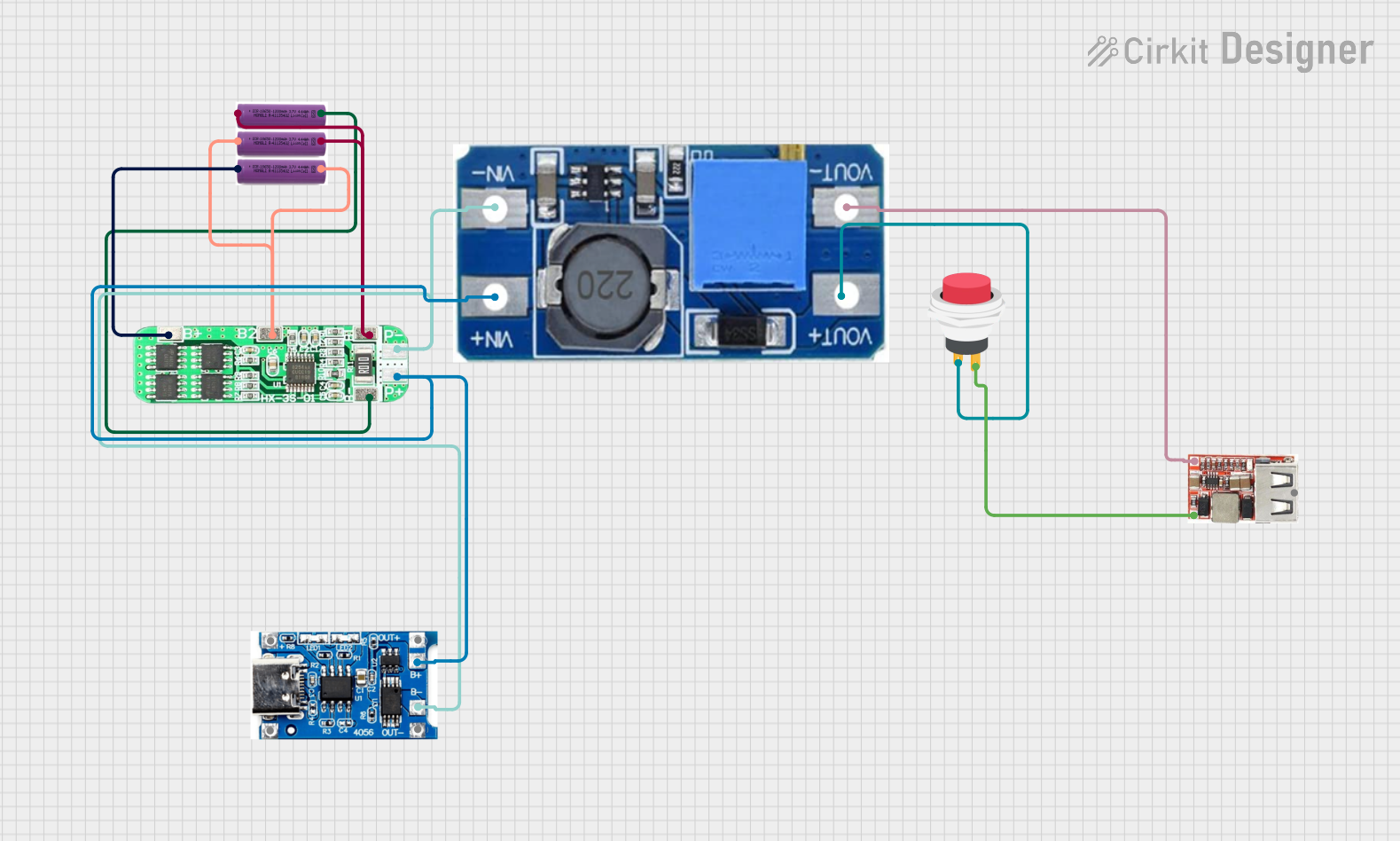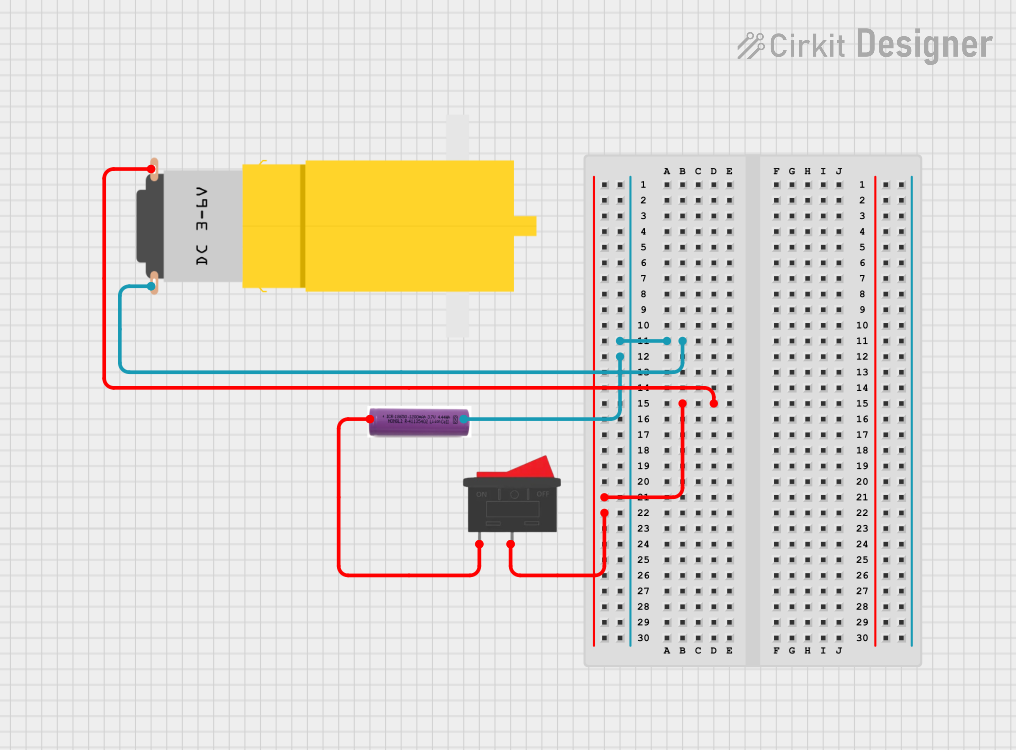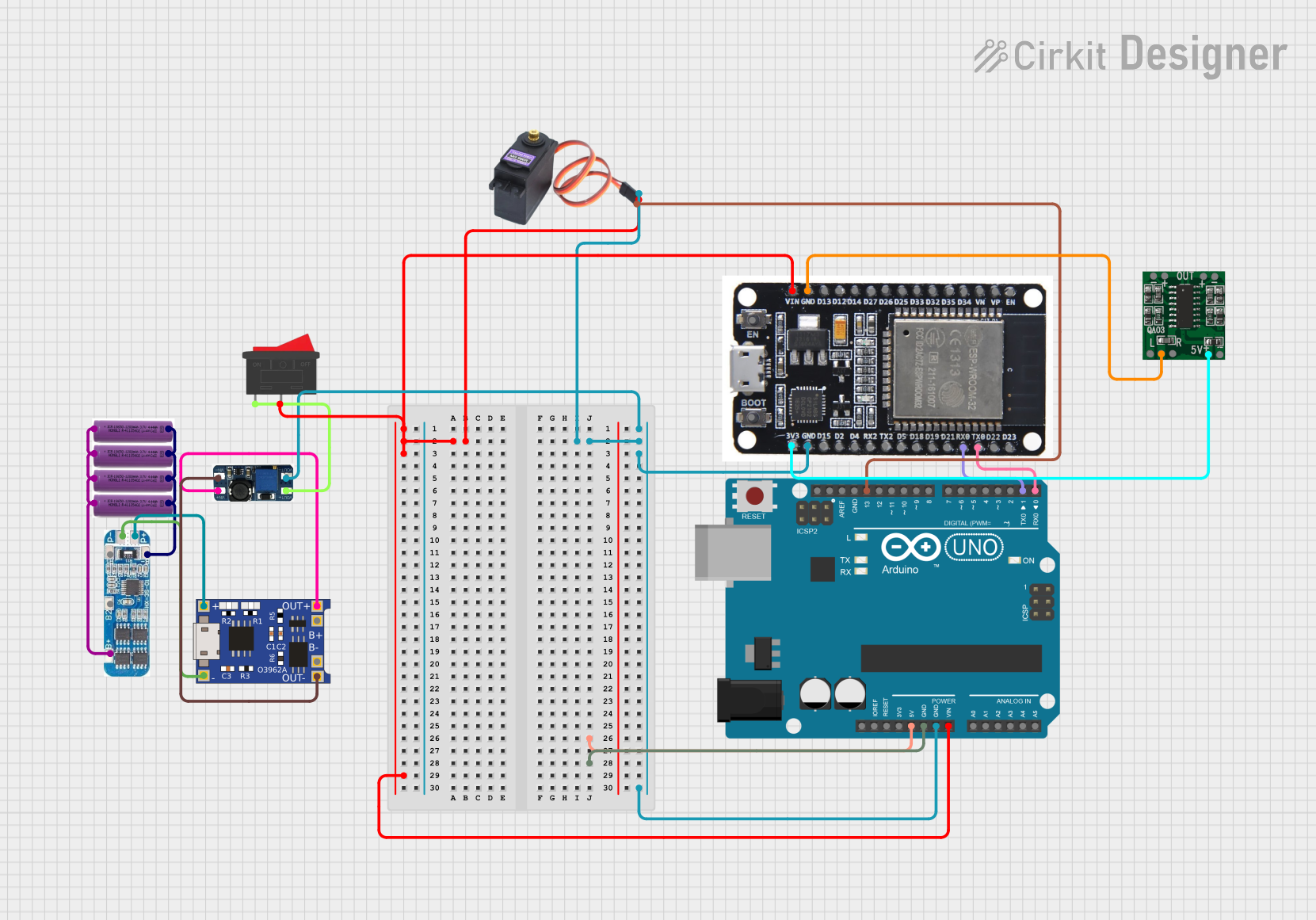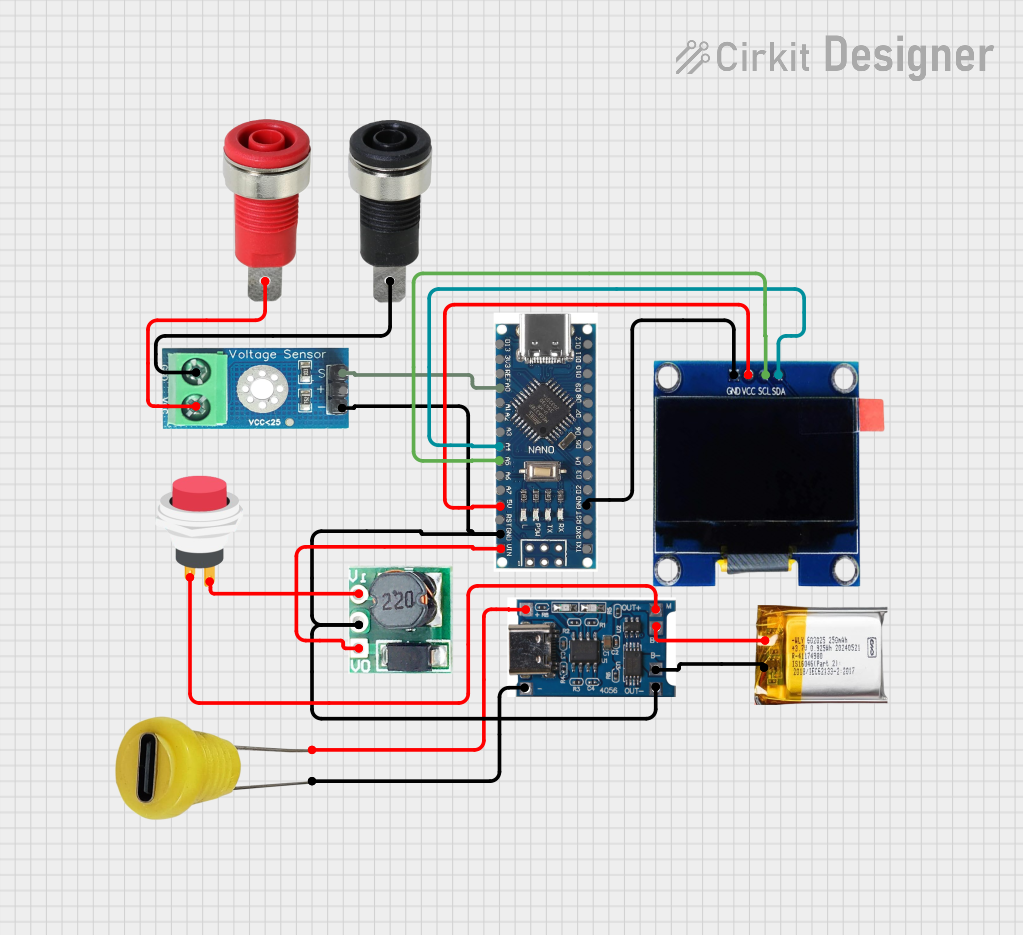
How to Use 3.3v battery: Examples, Pinouts, and Specs

 Design with 3.3v battery in Cirkit Designer
Design with 3.3v battery in Cirkit DesignerIntroduction
A 3.3-volt battery is a compact and reliable power source designed to deliver a steady voltage of 3.3 volts, which is ideal for powering a wide range of low-power electronic circuits and devices. This type of battery is commonly used in applications such as powering microcontrollers, real-time clocks, wearable devices, and other portable electronics that require a consistent voltage level for optimal operation.
Explore Projects Built with 3.3v battery

 Open Project in Cirkit Designer
Open Project in Cirkit Designer
 Open Project in Cirkit Designer
Open Project in Cirkit Designer
 Open Project in Cirkit Designer
Open Project in Cirkit Designer
 Open Project in Cirkit Designer
Open Project in Cirkit DesignerExplore Projects Built with 3.3v battery

 Open Project in Cirkit Designer
Open Project in Cirkit Designer
 Open Project in Cirkit Designer
Open Project in Cirkit Designer
 Open Project in Cirkit Designer
Open Project in Cirkit Designer
 Open Project in Cirkit Designer
Open Project in Cirkit DesignerCommon Applications and Use Cases
- Microcontroller power supply (e.g., Arduino, ESP8266, ARM Cortex-based boards)
- Real-time clocks (RTC)
- Wearable electronics
- Portable medical devices
- Wireless sensors and IoT devices
Technical Specifications
Key Technical Details
| Specification | Value | Description |
|---|---|---|
| Nominal Voltage | 3.3V | The voltage at which the battery operates |
| Capacity | Varies (mAh) | The amount of charge the battery can hold |
| Chemistry | Varies | The chemical composition (e.g., Li-Ion, LiPo) |
| Rechargeability | Yes/No | Indicates if the battery is rechargeable |
| Operating Temperature | Varies (°C) | The range of temperatures for safe operation |
Pin Configuration and Descriptions
Since a 3.3V battery typically comes as a cell without pins, the "pin" configuration refers to the battery terminals:
| Terminal | Description |
|---|---|
| Positive (+) | The anode of the battery, usually marked with a plus sign |
| Negative (-) | The cathode of the battery, usually marked with a minus sign |
Usage Instructions
How to Use the Component in a Circuit
- Identify the polarity: Determine the positive and negative terminals of the battery.
- Connect to the circuit: Attach the positive terminal to the VCC or VIN of the electronic device and the negative terminal to the ground (GND).
- Power management: If the device has an onboard voltage regulator, ensure it is compatible with the 3.3V input. If not, a voltage regulator may be necessary to step down higher voltages.
Important Considerations and Best Practices
- Voltage compatibility: Ensure that the device you are powering can operate at 3.3V.
- Current draw: Check that the battery's capacity can handle the current draw of your circuit for the desired duration.
- Battery life: To maximize battery life, implement power-saving features in your design.
- Safety: Use a battery management system (BMS) for rechargeable batteries to prevent overcharging and deep discharging.
Troubleshooting and FAQs
Common Issues Users Might Face
- Device not powering on: Check the battery charge and connections.
- Short battery life: Ensure the current draw is within the battery's capacity limits.
- Inconsistent performance: Verify that the operating temperature is within the specified range.
Solutions and Tips for Troubleshooting
- Battery charge: Use a multimeter to check the battery voltage. If below 3.3V, recharge or replace the battery.
- Connection issues: Inspect for loose connections and ensure proper polarity.
- Temperature effects: Operate the device within the recommended temperature range.
FAQs
Q: Can I recharge a 3.3V battery? A: It depends on the battery chemistry. Rechargeable batteries like Li-Ion or LiPo can be recharged, while primary cells cannot.
Q: How do I know when to replace the battery? A: When the voltage drops below the operational level of the device or the device fails to function correctly, it's time to replace the battery.
Q: Is it safe to connect multiple 3.3V batteries in parallel or series? A: Connecting in parallel is generally safe and increases capacity, but ensure the batteries are of the same type and charge level. Connecting in series will increase voltage and is not recommended for devices designed for 3.3V.
Example Code for Arduino UNO
// Example code to check battery voltage using Arduino UNO
int batteryPin = A0; // Analog pin connected to battery +
void setup() {
Serial.begin(9600);
}
void loop() {
int sensorValue = analogRead(batteryPin); // Read the battery voltage
float voltage = sensorValue * (3.3 / 1023.0); // Convert to voltage
Serial.print("Battery Voltage: ");
Serial.println(voltage);
delay(1000); // Wait for a second before next reading
}
Note: This code assumes that the Arduino's AREF is set to 3.3V. If the AREF is set to 5V, adjust the conversion factor accordingly.